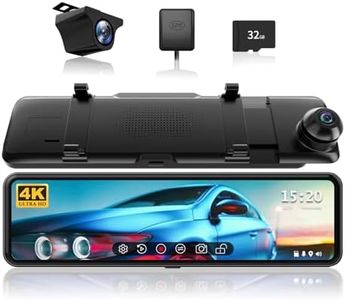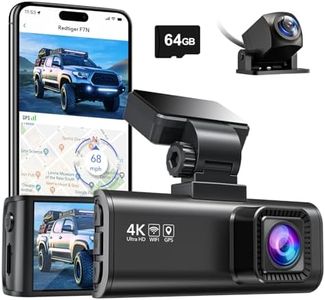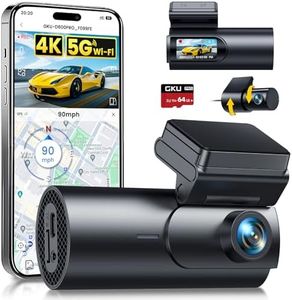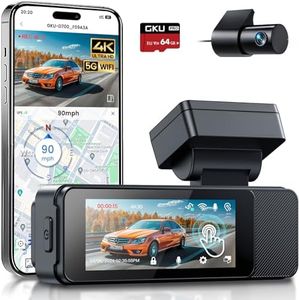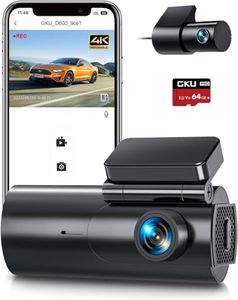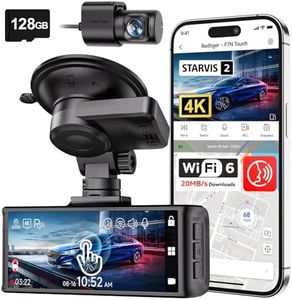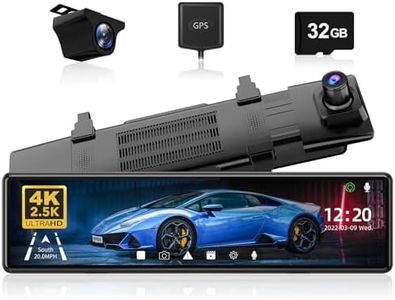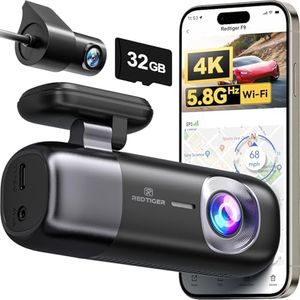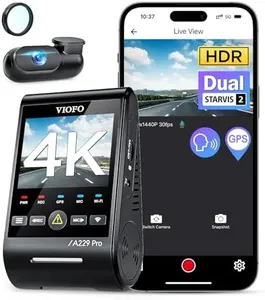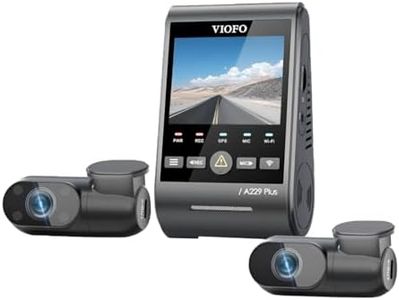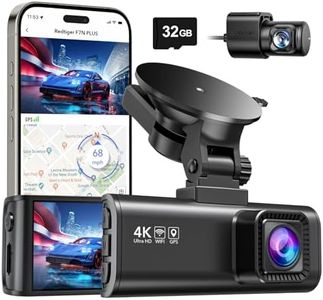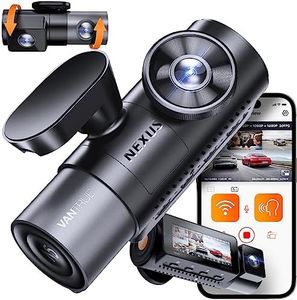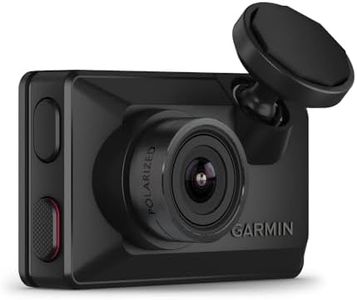We Use CookiesWe use cookies to enhance the security, performance,
functionality and for analytical and promotional activities. By continuing to browse this site you
are agreeing to our privacy policy
10 Best Car Dash Cameras
From leading brands and best sellers available on the web.Buying Guide for the Best Car Dash Cameras
Choosing a car dash camera can make driving safer, offer peace of mind, and help protect you in case of accidents or disputes. The main goal is to pick a dash cam that reliably records clear video, captures key details, and is easy to use. To find the best one for you, it’s important to consider how you drive, where you park, and what features matter most to your daily routine. Whether you drive long commutes, park on busy streets, or just want simple security, understanding key specs will help you make the right choice for your needs.Video ResolutionVideo resolution refers to how many pixels are used to record the image. It’s important because higher resolution captures more detail, such as license plates and road signs, which can be crucial in case of an incident. Most dash cams offer resolutions like 720p (HD), 1080p (Full HD), or even 1440p and 4K (Ultra HD). Lower resolutions like 720p work for basic monitoring but might miss finer details, especially at night or in bad weather. 1080p is a good balance for everyday driving as it provides clear footage. Higher resolutions such as 2K or 4K are best if you want the sharpest images for things like capturing plate numbers at a distance or in complex scenes. Choose a resolution that matches how important image clarity is for your use; regular city driving might make high resolution more critical, while basic coverage for personal reassurance might not need the highest option.
Field of View (FOV)The field of view indicates how wide the camera can 'see' in front of your vehicle, measured in degrees. This is important because a wider view lets the camera capture more lanes and greater details around your car, helping record events happening to the sides as well as straight ahead. Fields of view typically range from about 120 to 170 degrees. Narrower angles (around 120-130 degrees) provide a more focused, less distorted image and are fine for drivers mostly concerned with what’s directly ahead. Wider angles (150-170 degrees) cover more area and are better for busy roads or intersections, but edges may look a bit stretched. Select a field of view based on whether you need to cover just your lane or want a broader view of traffic and surroundings.
Night VisionNight vision refers to the dash cam’s ability to record clear videos in low-light or nighttime conditions. This is crucial if you often drive or park at night, as incidents can happen in poorly lit areas. Dash cams achieve night vision through good sensor quality, large apertures, or infrared features. Some cameras have basic night recording that works under streetlights, while others use advanced sensors or tech for even clearer nighttime footage. Consider how often you drive at night or park in dark places, as better night vision will ensure critical details are still visible when you need them most.
Loop RecordingLoop recording means the dash cam automatically records over the oldest footage when the memory card fills up. It’s important so you never have to worry about manually deleting old videos or running out of space. Most dash cams let you select the length of each video segment (like 1, 3, or 5 minutes). Shorter loops can make finding a specific moment easier, while longer loops reduce the number of files. If you don't want to manage video files often, choose a dash cam with seamless, hassle-free loop recording and just set it up once.
Parking ModeParking mode allows the dash camera to keep recording or to activate recording if it detects motion or impact while your car is parked and the engine is off. This is valuable for capturing potential hit-and-runs or vandalism. Some basic parking modes only turn on with a sudden shake, while advanced versions continuously monitor for movement. If you regularly park in public or high-traffic areas, a robust parking mode will offer more security even when you’re not in your vehicle.
G-SensorA G-sensor detects sudden changes in movement, such as an impact from a collision. When triggered, the dash cam locks the current video file to prevent it from being overwritten, making sure crucial footage is saved. This feature is essential for any dash cam, as it ensures important evidence won’t be lost in an accident. All good dash cams have a G-sensor, but you can often adjust the sensitivity for different driving conditions—higher for normal city use, lower to reduce triggers on bumpy roads.
Ease of Installation and UseHow simple it is to mount, power, and operate the dash camera can make a big difference in your experience. Some dash cams have basic plug-and-play functionality and mount with a suction cup, while others require wiring or come with larger screens and multiple buttons. If you want a straightforward setup, look for models that don’t require complicated installation and have intuitive menu controls. More advanced systems may be better for tech-savvy users or those who want extra features, but simplicity is usually best for everyday drivers.
Storage CapacityDash cameras store video on memory cards, so the maximum card size supported affects how long you can record before old files are overwritten. If you do long journeys or want to keep several days’ footage, look for dash cams that support larger memory cards (such as 64GB, 128GB, or more). Smaller cards (about 16GB-32GB) may be fine for shorter trips or if you intend to review footage more often. Pick storage based on your travel frequency and how often you plan to check the camera's files.
